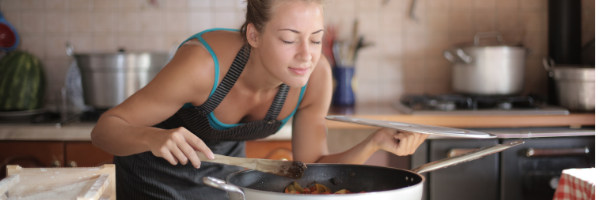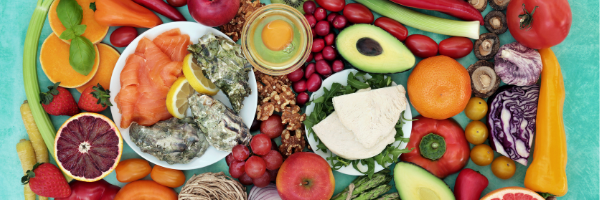When you think about digestion, what comes to mind first? I bet you think about your gut. Which isn’t wrong, but digestion is more complex than that. There are four stages of digestion in total; your gut is where the second stage takes place, not the first.
The first stage of digestion is the cephalic stage; cephalic meaning in or near the head. Before we talk more about this, let’s break down the stages, so you understand the process:
- Cephalic: brain, mouth (ingestion)
- Gastric: stomach
- Intestinal: absorption
- Excretion of waste
Our lives are so busy and complex that eating on the go, being distracted while eating and ordering food has become the norm. We often even see meals as something that gets in the way of doing other things, skipping them or eating what is most convenient. All of this has us skipping or not taking the proper time with that crucial first stage of digestion. This isn’t helping energy levels or helping you with your wellness goals.
Most think the main stage of digestion occurs in the stomach, but without the first stage, the stomach struggles. The cephalic phase of digestion is when the brain responds to the sight, smell, taste, or thought of food, which stimulates the salivary glands to produce salivary enzymes. About 20% of total acid secretion occurs before food enters the stomach. So basically, digestion begins before food even enters your mouth; when you feel hungry, your body tells your brain that it’s time to eat. Seeing and smelling food sends a message to your brain to get ready for the food you are about to eat, which makes you salivate. When we don’t give proper attention to our hunger and our food before we eat, we can suffer from digestion problems. Common symptoms of digestive problems include bloating, gas, indigestion, and malabsorption.
When we suffer from digestion issues, we assume that either food or the gut is the culprit. Either could definitely be the issue, but here’s the thing: if you don’t work on the first stage, what you eat and healing the gut won’t be enough.
Before you start cutting out foods, try these tips first:
- Make as many of your meals as possible. The process of cooking has you thinking about the meal, which ignites the digestion process. Or if you do eat out, use the steps coming up to aid in this (cephalic) stage of digestion.
- Sit down at a nicely set table. Use flowers, candles, and goblet glasses. There’s a reason that restaurants do this: it helps create a meal experience, which increases good feelings, putting you in a resting and digesting state.
- Make sure your meals are fragrant. Use herbs and spices you love to create a yummy smell. The smell ignites your senses in a good way, getting those salivary enzymes going. This is the exact reason that real estate agents stage houses with freshly baked cookies.
- Present your meal in an appealing way. Seeing how great it looks is part of the process of igniting your digestion.
The tips above create a meal experience. They get the senses going, which are key to starting the process of digesting your food.
There are a few more steps to the cephalic stage of digestion…
- Chew your food! On average, most people only chew their food about five times before swallowing, but we should be aiming for 20–30 times per bite (this will obviously depend on what you are eating).
- Aim to take 20 minutes per meal. That means you most likely need to slow down. It takes approximately 20 minutes for your body to register that you have eaten and are full.
- Put your fork down between bites.
- Take a few deep breaths. Then take another bite.
- Listen to your body’s cue of fullness. If you take 20 minutes to eat, your body should naturally tell you when to stop.
The enzymes in your mouth are what start to break down carbs (amylase) and fat (lipase). But you do need to chew your protein sources just as much, if not more. If you aren’t, the protein hits your stomach while still almost whole, which wreaks havoc on your gut. When you don’t chew enough by rushing, gobbling your food and not being present, your salivary enzymes cannot do their job properly, which can create bloating, indigestion, gas, and malabsorption.
Using all of your senses to enjoy the whole experience of food, from creation to eating, is called sensual eating. Our senses are powerful. Our sight and smell are the most important senses used in the initial stage of digestion; they are what gets everything revved up. Then, of course, comes the experience of the texture (touch) and taste of the food. If you aren’t present, rushing your meal, and not paying attention, you are not allowing yourself the full sensual eating experience.
Once you have practiced sensual eating and the tips from above for a couple of weeks and find that you still have digestion issues, then start looking at the foods you eat. Trying out all the tips before you start to cut particular foods out will hopefully help your digestion: why cut out foods you love if you don’t have to?
Chefs learned how to use the cephalic stage to their advantage, using it to help create an amazing meal experience to keep people coming back for more. Knowing this, I decided to start healthy cooking classes to not only help people learn how to create healthy and tasty meals for themselves and their families, but also to share tips on how to improve their wellness.
I would have loved to have run these classes in person, but with the COVID-19 restrictions, we are making the class virtual. It will be the same concept as if we were together in the same space: a step-by-step process for making an amazing meal that you can serve that evening for dinner.
Along the way, the chef and I will be giving you tips on sensual eating and how to create a meal experience, so you improve your digestion and fully enjoy your food.
Attending these classes will also support a good cause: we are working with Cooks Who Feed, an organization whose mission is to help feed hungry people the world over. For every registration, $5 goes to purchasing an apron(s), which creates 100 meals for those in need. At the end of our class, we will do a draw for the apron.
We will be going over the tips offered in this article in detail and more in the virtual cooking class on Sunday, February 28. Click here for more details.
I hope you can join this step-by-step cooking class with us! I know you will learn a lot and have a ton of fun!
For more information on the digestion process:
LibreTexts Medicine. 2020. 3.3: The Digestion and Absorption Process. Url: https://med.libretexts.org/Courses/American_Public_University/APU%3A_Basic_Foundation_of_Nutrition_for_Sports_Performance_(Byerley)/03%3A_Digestion_and_Absorption/3.3%3A_The_Digestion_and_Absorption_Process#:~:text=There%20are%20four%20steps%20in%20the%20digestion%20process%3A%20ingestion%2C%20the,contractions%20called%20peristalsis%20and%20segmentation.





